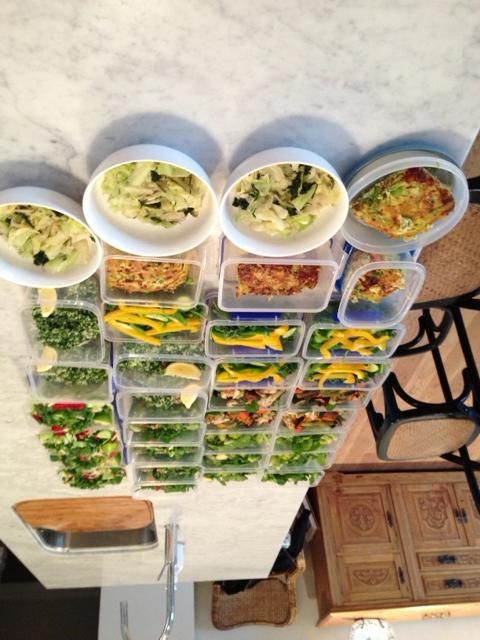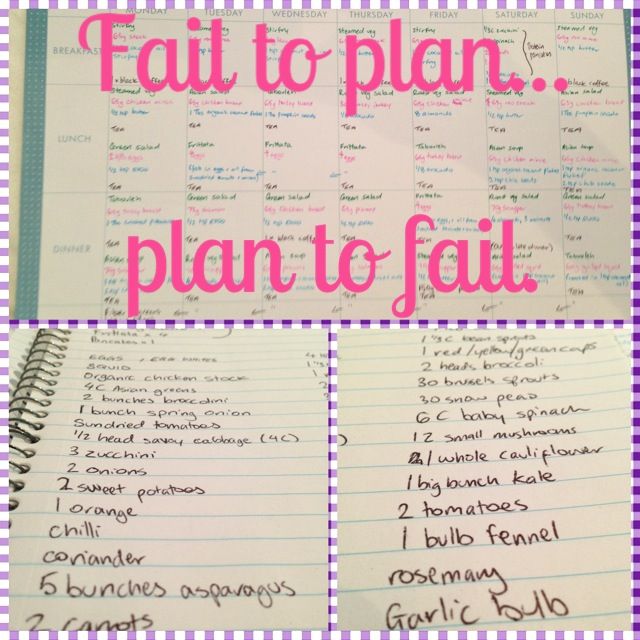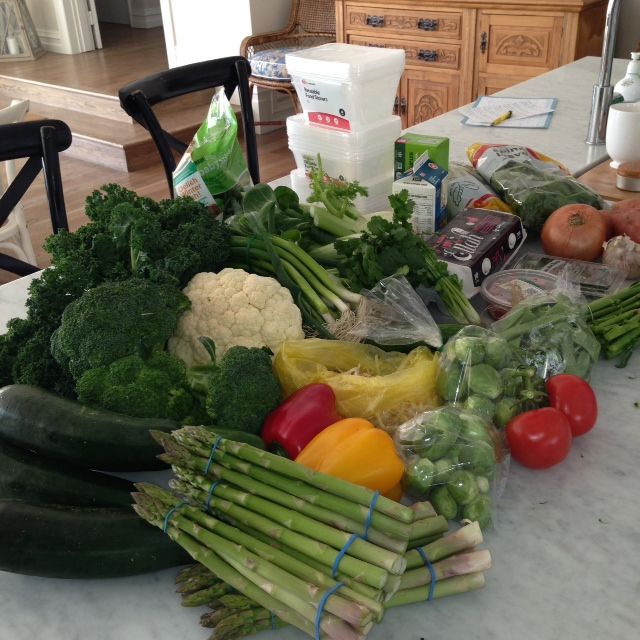How to Meal Prep (Part 1: Planning)
So my social media platforms went a bit bananas when I posted this photo of my meals for the next 7 days:

Some people might call this obsessive. I call it dedicated. Plus preparing meals in advance is just too darn convenient during busy weeks where I won't want to cook and will have massive stress-induced cravings to eat everything in sight that I shouldn't. The key is organisation. And I happen to be an avid organiser.
I'll preface this by saying that I normally cook for myself as I'm the only one in the house on this particular "regime", but you can use my methods to just plan and prep dinners, or larger quantities for more people over less days.
Step One: Figure out what you need to eat
In order to plan a menu, you need to know what each meal should consist of. Do you operate better with 3 meals a day, or 5, or more? How much fat, protein and carbohydrates do you need to function optimally? I can't stress enough how much this differs from person to person!
From there, you basically have a formula for each meal. For example, I know that I need x cups of vegies, x grams of protein and x grams of fat in each meal, and therefore my priority is making sure I hit those targets. You might have more or less, fruit, carbohydrates, dairy etc etc. If it helps, use different coloured pens on your planner to clearly identify each food type so you can see that you're getting what you need.

Step Two: Figure out what you want to eat
I've seen a lot of meal prep that consists of 5 days of eating the exact same thing (usually plain chicken, plain sweet potato, and plain steamed broccoli - not yum) which would bore me to tears. It's important to have variety in your meals not only to keep you sane, but to make sure you're getting the most from your food nutrition-wise. You can do this a couple of ways. Flick through some clean cookbooks (I personally really like Jane Kennedy's and Sarah Wilson's [www.iquitsugar.com] recipes for healthy slants on ol' family favourites) or the internet for inspiration. Another way is to write a list of all the vegetables you like (and if you don't like vegetables, grow up - they're good for you so it's time to put your big girl/boy pants on and make them enjoyable) and mix and match those vegies into dishes - some salads and some cooked.
For example, I like most veg and my list looked like this:
- Zucchini
- Onions (caramelised!)
- Asparagus
- Cabbage, green
- Cabbage, savoy
- Fennel
- Kale
- Broccoli
- Brussels sprouts
- Snow peas
- Baby spinach
- Cucumber
- Capsicum (red, yellow, green)
- Cauliflower
- Tomato
- Pak choy/bok choy/Chinese greens
- Broccolini
- Spring onion
- Carrot
- Bean sprouts
- Celery
- Mushrooms
The vegie meals I decided I would make this week ended up like this:
- Frittata (zucchini, caramelised onion, asparagus plus eggs, egg whites, sundried tomatoes & nutritional yeast)
- Steamed vegies (broccoli, brussels sprouts, asparagus, snow peas)
- Green salad (kale, spinach, cucumber, yellow and green capsicum)
- Fake-out Tabouli (cauliflower, kale, tomatoes, spring onions plus lemon, parsley & garlic)
- Asian soup (Bok choy, Chinese greens, broccolini, spring onions plus stock, chilli, ginger, garlic, lime, lemongrass, kafir lime, coriander & coconut aminos)
- Thai shredded salad (savoy cabbage, carrots, cucumber, bean sprouts, celery, red capsicum plus coriander, ginger, chilli & lime)
- Roasted vegie salad (spinach, mushroom, asparagus, cauliflower, yellow capsicum, zucchini, carrot plus herbed seasoning sea salt)
- Stir fry (cabbage, fennel, kale plus rosemary, thyme, coconut oil & herbed seasoning salt)
You can see that by adding herbs and spices and a couple of different cooking techniques, you can easily manipulate the flavour of your dishes. Plus I know that if I mix and match these dishes throughout the week, I'll be getting plenty of nutritional variety.
I call those dishes my "vegie bases". For me to make a meal with them, I just need to add protein and fat, and I can have even more variety during the week by switching up which protein and fat sources I use. For example, I might have my cauliflower tabouli one day with some olives and marinated chicken breast, then the next day with some macadamia crusted lamb chops. I can also have marinated chicken with any of the other bases, same with the lamb, but it won't feel "same same" because the combination is different enough to keep my tastebuds interested.
Step Three: Figure out how much you need to make
I strongly recommend having a notebook or a planner where you can pop in your meals and you can see how many times during the week (or whatever time period you're planning for) you're eating a particular vegie base, protein source and fat source. This will tell you how much of each you need to prepare.
Based on my 7-day menu, each vegie dish came up 3 or 4 times. Then it's just a case of doing some maths. How much of each ingredient goes into one serve of that base? (hint: this will vary and depends on what you determined in Step One) Multiply that by the number of times it appears in your menu plan.
For example, my green salad has 1C baby spinach, 1/2C kale, 1/4 yellow capsicum, 1/4 green capsicum and half a lebanese cucumber per serve. If it appears 4 times during the week on my meal plan, that means I'll need 4C baby spinach, 2C kale, 1 each yellow and green capsicums and 2 cucumbers.
Do this for each vegie base (and your proteins and fats, too, if you need to). Now you have a list of the vegies you need for the week - don't forget to look for double-up ingredients so you can add the quantities together for your shopping list (ie, I used kale in 3 recipes so on my shopping list I added them together to work out I needed 3 bunches of kale).

Now you're ready to go shopping and get cooking!
In Part 2, I'll explain how to do your food prep, from buying the ingredients to packing your meals, as quickly as possible while keeping the dishes to a minimum!

